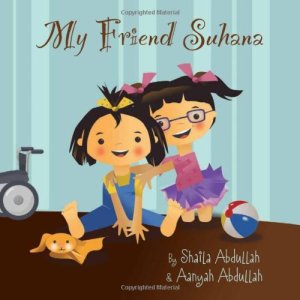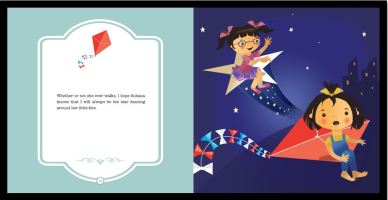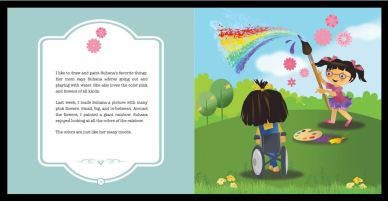We know that volunteering is important for health and well-being among older people. While higher education is known to facilitate volunteerism, much less is known about the role of social networks.
The post Older adult’s social networks and volunteering appeared first on OUPblog.
They each shared their reasons for being there – cherished memories of reading with a parent, the desire to instill a love of reading in their own kids, wanting to honor a father’s passion for education. It was the first task Joy Brooke, co-chair of First Book’s Seattle volunteer chapter, asked her members to complete.
with a parent, the desire to instill a love of reading in their own kids, wanting to honor a father’s passion for education. It was the first task Joy Brooke, co-chair of First Book’s Seattle volunteer chapter, asked her members to complete.
“Everyone had a story that led them to First Book. And everyone believed in the simple goal of getting books to kids,” said Joy. Joy herself was drawn to the idea of helping put new books into the homes of low-income families. As a teacher and a mother of two who is also earning her doctorate in Education Leadership, she also loves how much flexibility and creativity she has a First Book volunteer.
In the past year, she and the Seattle volunteer chapter held a unique fundraising event a local glassblowing studio, distributed a truckload of 40,000 books to local kids in need and hosted their 3rd Annual Storytime event with local celebrities.
To top it all off, Joy took advantage of a recent family vacation to provide new books to kids in Costa Rica. Her own kids joined her on a visit to a school in the coastal town of Quepos where they toured the library and read stories in Spanish. “The experience,” she said, “was the most rewarding part of the trip. It cost so little and was worth so much.”
First Book is grateful to Joy and all the volunteers who help bring books to kids across the country and around the globe. To join First Book as a volunteer, visit www.firstbook.org/volunteer.
The post The Joy of Giving Back appeared first on First Book Blog.

 .
.
My Friend Suhana
by Aanyah Abdullah & Shaila Abdullah
Loving Healing Press 1/1/2014
978-1-61599-211-9
Age 6 to 8 30 pages
.
“A simple tale of love and friendship to warm your heart. This is the tale of a little girl who forms a close bond with a child with cerebral palsy. The girl finds that through her art, she can reach her special friend Suhana.”
Opening
“My friend Suhana is like no other girl I know.”
The Story
Suhana has Cerebral Palsy or CP for short. She is a quiet girl who moves little and depends upon others for all her needs. Despite all her limitations, Suhana can communicate. It takes someone special to understand all of Suhana and her needs. The narrator, an unnamed little girl, is trying to be that someone special for Suhana. The young girl, a budding artist, tries to use her art with Suhana. She uses different colors to symbolize Suhana’s various moods. Red equates being upset, blue is calm and pink is love. The young girl rocks Suhana in her arms and shows her the pictures she draws. Both girls are seven-years-old, which is not lost on the young girl.
Review
My Friend Suhana is a sweet homage to a young girl with cerebral palsy from a young girl who tries to be her friend. As narrator, the young girl tells us about Suhana and their relationship. The young narrator displays a great deal of empathy for Suhana, a girl her own age. Suhana’s mother tries to help the young girl understand her daughter. The young narrator volunteers with Suhana each week–
“But for one hour each week I get a chance to rock her in my arms and imagine that she is my special friend!”

What the young girl fails to realize is that she needs not imagine. Suhana is her special friend and she is Suhana’s special friend. Volunteering at the special needs class, the young narrator begins to understand Suhana through her own art, probably more than Suhana understands what the young artist is trying to say. The young volunteer does not say if she has helped Suhana make her own art, but that would be a great step to take.
As a story, My Friend Suhana falls quite short. The protagonist is the young narrator, telling her own story, but there is no antagonist, unless you consider CP. A teacher tells the narrator that her art can help ease anxiety in others, so the girl starts giving her art to her friends. What changes does this make? Do these kids find relief and does this help the protagonist grow? The narrator is seven-years-old, as was the author when she co-authored this book. She relates her experiences well, but for what reason. What is the story? Where is the conflict that will change her? Who is the protagonist?

Rather than go into craft, conflicts, and all that stuff the young writer may not grasp, but a story needs, I would rather say this is a fine attempt for a first book. Putting oneself out there with kids who are so extremely different from yourself is difficult. Then telling the world about it, trying to relate what a great kid Suhana is, turns a hill into a mountain and this young author climbs that mountain gracefully and with much empathy. Aanyah is a great kid.
She realistically explains Suhana’s reactions to things she does not like, “she clenches her fists,” and when happy, “she waves her legs and arms wildly.” When Suhana bumps her head she, “screams unhappily . . . tired from crying, she fell asleep.” For seven years of age, this young girl is extremely observant and insightful. Everything the young narrator mentions about Suhana, I have seen repeated many times by kids with CP I have worked with. It takes a special individual with great empathy and patience to help these kids, even more to be a friend. Which is why I would rather exult the young author’s ability to work with others, her empathy, her patience, and her art, which she uses to help others.

My Friend Suhana is not a story. It is a loving tribute to a special friend and as such can be very helpful for other kids to read. Mainstreamed schools are a great place for this work to be available. Volunteer centers that allow kids to help, is another. Obviously, places with cerebral palsy patients are great places for this work, but any place with young children as clients that allows children to volunteer can benefit from having the volunteers read this young writer’s first work. My Friend Suhana may not be a “story,” but it has a lot of heart.
MY FRIEND SUHANA. Text copyright © 2014 by Aanyah & Shaia Abdullah. Illustrations copyright © 2014 by Shaila Abdullah. Reproduced by permission of the publisher, Loving Healing Press, Ann Arbor, MI.
.
Learn more about My Friend Suhana HERE.
Buy My Friend Suhana at Amazon—B&N—Loving Healing Press—your local bookstore.
.
Meet the author, Aanyah Abdullah at her website: http://myfriendsuhana.com/
Meet author, Shaila Abdullah at their website: http://www.shailaabdullah.com/
Find other interesting books at the Loving Healing Press website: http://www.lovinghealing.com/
.
.
Filed under:
3stars,
Children's Books,
Library Donated Books,
Picture Book Tagged:
Aanyah Abdullah & Shaila Abdullah,
art,
cerebral palsy,
children's book reviews,
CP,
friendship,
hardships,
Loving Healing Press,
relationaships,
volunteerism 







For my next blog I would like to explore youth volunteerism and the positive impact that youth volunteers can have for libraries: There are a number of reasons that libraries should enlist and recruit youth’s to volunteer in the library but one of the most important reasons is that it enables libraries to understand youth’s :
Just as successful businesses make decisions based on what their customers want, successful organizations need to do the same. Nike doesn’t design tennis shoes without talking to the athletes who wear them. Organizations too need to be aligned with their target markets. Only teens can tell you what is going on in their lives, what are the pressures they face. “If the problem is gang violence, you go to the teenagers-even to the detention centers-and bring those youths to the table. Anything else is seeds for failure” (McLarney & Leiger, 1997, p. 4)
This illustrates a key theme that we’ve been discussing in class; libraries need to involve youths-it is only then that libraries will be able to understand what they can do to meet the needs of youth so that they can maintain their relevance in the lives of this segment of the population.
In addition to being able to develop a deeper understanding of the diverse needs of youths, libraries will also benefit from the energy, enthusiasm, and perspective that youth volunteers bring to the library. For example, The Canadian Volunteerism Initiative, in cooperation with the Heartwood Centre for Community Youth Development, implemented a youth volunteer project at the Halifax Public Library. In a handbook that resulted from this project entitled, Youth Volunteers at Your Library: Engaging Youth in Your Library, a number of testimonials are provided, which highlight some of the benefits that youth volunteers can have. For example:
“We are just realizing how much the library and community have so much to from youth involvement. It is not just that we have things to give, we also have so much to gain.”
-HPL personnel (2006)
“We have a lot to learn from youth.” -HPL personnel (2006)
“The youth’s energy is so contagious.” -HPL personnel (2006)
This handbook is full of useful information about how to engage youth volunteers, the challenges that may be encountered, and the positive impact that youths can have for the library - I strongly recommend checking it out!
Not only do libraries benefit from youth volunteerism, but youths themselves do as well. Some of the more obvious benefits that youth derive from volunteering at the library include the following: It enables youth to increase their awareness and knowledge of library services and resources, it enables them to develop new skill and increase their employability, youth will be recognized by the library and the community, they will develop a stronger sense of belonging in the library and the community, it will help to enhance their self-confidence, become meaningfully engaged and develop new relationships (Heartwood, 2002, pp. 9)
So how do libraries recruit youth volunteers? This is one area that I think that libraries need to give more attention to. There are a number of resources available both in print and online that can equip librarians with the knowledge and skills that they need to successfully recruit youth volunteers. For example, some of the books that I have came across include Teen Volunteers Services in Libraries (Kellie Gillespie), Library Teen Advisory Groups (Diane Tuccillo), and Connecting Young Adults and Libraries (Patrick Jones). Some of the online resources which may be useful include: The top 10 ways to recruit and enage youth volunteers (World Volunteer Web), Recruiting and Sustaining Youth Volunteers (Canada Volunteerism Initiative) and Tips For Recruitment of Youth Volunteers (Points of Light Foundation). These resources provide readers with a number of useful strategies for reaching youths, such as using mediums which appeal to youth (i.e. the web), dispersing brochures and posters in high traffic areas, recruiting youth for a particular event, recruiting youth indirectly through adults or through other youth volunteers, and becoming visible at places that youths frequent.
I myself feel that one very important way to get youth’s to volunteer in the library is by building stronger connections with local schools. One reason for this is because, as stated in Ontario Secondary Schools, Grades 9 to 12: Program and Diploma Requirements, 1999 (OSS), every student who begins secondary school during or after the 1999–2000 school year must complete a minimum of 40 hours of community involvement activities as part of the requirements for an Ontario Secondary School Diploma (OSSD). Although many students may be aware that the library is a viable option for completing the community service hours, I feel that libraries should be doing more to promote themselves to students as an option. Visiting schools and speaking to students about the benefits that volunteering at the library can have for them as well as the positive impact that they can have on the library as well as their community, may help to spark some motivation in the minds of youth
I recently worked in a library where a number of youths have/are completing their community service hours. I’m not going to lie, I was a little skeptical at first; I thought that their enthusiasm would more than likely be waning because they were being forced to do these community service hours in order to graduate and I also thought that I may get a little bit of attitude from some of them. However, it turns out that these youths are the most enthusiastic, energetic and positive volunteers that I have ever worked with. They really do enjoy being at the library and they really like it when I give them responsibilities and duties. In fact, I think that they respect me more because I am willing to entrust them with these responsibilities; it shows them that I trust them and that I know they are capable of performing these tasks. More importantly, these youth volunteers are great with the library patrons, making every effort to engage with them by asking them if they need help finding anything and by making small talk with them. The patrons really respond positively to this as well.
Overall, youth volunteers are a wonderful asset to the library and I think that all libraries would benefit from developing a deeper recognition of the positive impact that youth volunteers can and do have.
References
Heartwood Centre for Community Youth Development (2002). Youth Volunteers at Your Library. Retrieved December 5, 2008 from http://www.heartwood.ns.ca/tools/YouthVolunteers.pdf
McLarney, M. & Leiger, L. (1997). Younger Voices, Stronger Choices:Promise Project’s Guide to Forming Youth/Adult Partnerships.YMCA of Greater Kansas City.
Ministry of Education and Training. Ontario Secondary Schools, Grade 9-12. Retreived December 5, 2008 from
http://www.edu.gov.on.ca/extra/eng/ppm/124a.html
Posted in Community Outreach, Uncategorized Tagged: volunteerism









 with a parent, the desire to instill a love of reading in their own kids, wanting to honor a father’s passion for education. It was the first task Joy Brooke, co-chair of First Book’s Seattle volunteer chapter, asked her members to complete.
with a parent, the desire to instill a love of reading in their own kids, wanting to honor a father’s passion for education. It was the first task Joy Brooke, co-chair of First Book’s Seattle volunteer chapter, asked her members to complete.




